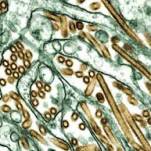Tests confirm low-pathogenic H5N1 in US swans

The US Department of Agriculture has announced final test results, which confirm that an H5N1 avian influenza virus detected in samples collected earlier this month from two Michigan wild mute swans is a low pathogenic subtype.
The USDA says that this strain has been detected several times in wild birds in North America and poses no threat to human health.
The USDA National Veterinary Services Laboratories (NVSL) confirmed the presence of the “North American strain” of low pathogenic H5N1 avian influenza in one of twenty samples collected from the two wild mute swans.
Preliminary test results announced on August 14 indicated that an H5N1 strain could be present in two of the collected samples. Only one of the samples contained high enough levels of the virus to conduct confirmatory testing. Genetic testing ruled out the possibility that either of the samples carried the highly pathogenic strain of H5N1 avian influenza that is circulating overseas.
The USDA says that low pathogenic strains of avian influenza commonly occur in wild birds and typically cause only minor sickness or no noticeable signs of disease in birds. Low pathogenic H5N1 is very different from the more severe highly pathogenic H5N1 circulating in parts of Asia, Europe and Africa. Highly pathogenic strains of avian influenza spread rapidly and are often fatal to chickens and turkeys.
Join 31,000+ subscribers
Subscribe to our newsletter to stay updated about all the need-to-know content in the poultry sector, three times a week. Beheer
Beheer








 WP Admin
WP Admin  Bewerk bericht
Bewerk bericht